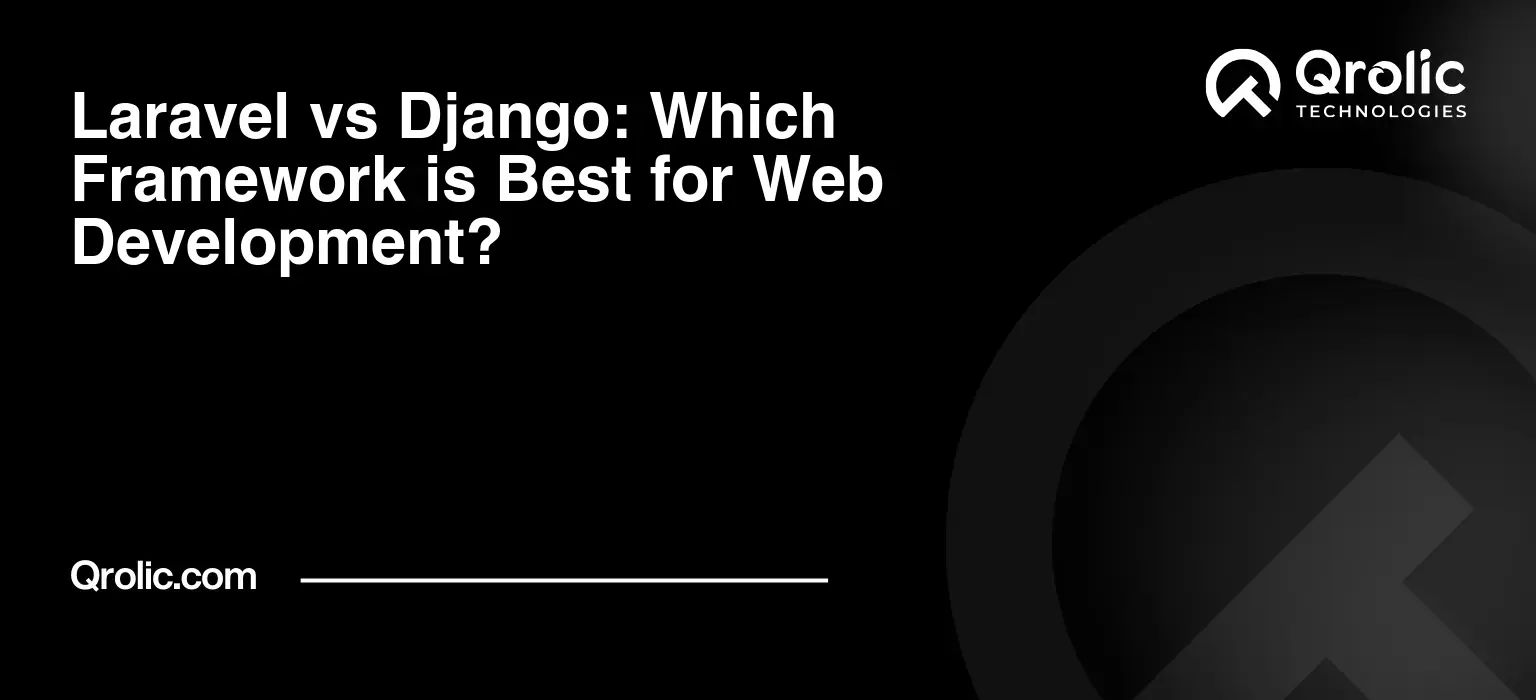Choosing the right web development framework is like choosing the right foundation for your dream house. A solid foundation ensures your house stands strong for years to come. Similarly, the right framework ensures your web application is robust, scalable, and maintainable. Two titans in the web development arena often top the list: Laravel and Django. This article dives deep into the Laravel vs Django debate, exploring their strengths, weaknesses, and ideal use cases, helping you determine which framework is the best fit for your project.
Quick Summary:
- Laravel (PHP) offers elegant syntax for complex apps.
- Django (Python) is "batteries-included" for rapid development.
- Choose based on project needs and your team’s skills.
- Both frameworks are powerful and highly scalable.
Table of Contents
- Understanding the Landscape: Why Frameworks Matter
- Introducing Laravel: The PHP Artisan
- Key Features of Laravel:
- When to Choose Laravel:
- Laravel’s Advantages:
- Laravel’s Disadvantages:
- Introducing Django: The Python Powerhouse
- Key Features of Django:
- When to Choose Django:
- Django’s Advantages:
- Django’s Disadvantages:
- Laravel vs Django: A Detailed Comparison
- 1. Language and Syntax: PHP vs Python
- 2. Learning Curve: Ease of Entry
- 3. Performance: Speed and Efficiency
- 4. Scalability: Handling Growth
- 5. Security: Protecting Your Application
- 6. Database Support: Variety and Compatibility
- 7. Community Support: Finding Help
- 8. Templating: Creating Dynamic Views
- 9. ORM: Database Interactions
- 10. Scaffolding and Code Generation: Speeding Up Development
- 11. Third-Party Packages and Libraries: Extending Functionality
- 12. Job Market: Career Opportunities
- Choosing the Right Framework: A Practical Approach
- Case Studies: Laravel and Django in Action
- Qrolic Technologies: Your Partner in Web Development
- Conclusion: A Matter of Perspective
Understanding the Landscape: Why Frameworks Matter
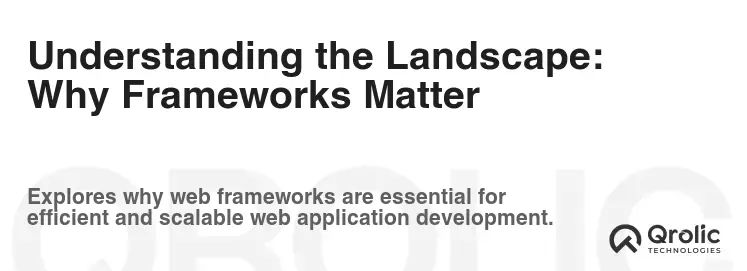
Before we jump into the nitty-gritty of Laravel and Django, let’s understand why web development frameworks are so crucial in the first place. Imagine building a house brick by brick without any blueprints or tools. It’s a daunting task, prone to errors, and incredibly time-consuming. Web development without a framework is much the same.
Frameworks provide a structure, a set of tools, and conventions that streamline the development process. They handle many of the repetitive tasks, such as routing, database interactions, and security measures, allowing developers to focus on building the unique features of their application.
Benefits of using a Web Development Framework:
- Speed and Efficiency: Frameworks offer pre-built components and functionalities, significantly reducing development time.
- Security: Reputable frameworks incorporate security best practices to protect against common web vulnerabilities like cross-site scripting (XSS) and SQL injection.
- Maintainability: Frameworks enforce a structured coding style, making code easier to understand, maintain, and update.
- Scalability: Well-designed frameworks support scalability, allowing applications to handle increased traffic and data loads.
- Community Support: Popular frameworks have large and active communities, providing ample resources, documentation, and support.
Introducing Laravel: The PHP Artisan
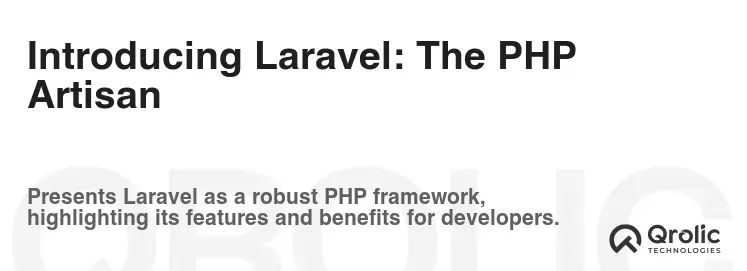
Laravel, a PHP framework, is renowned for its elegant syntax and developer-friendly features. It emphasizes code beauty and promotes best practices, making it a favorite among developers who value both functionality and aesthetics. Laravel strives to make the development process a pleasant and efficient experience.
Key Features of Laravel:
- Eloquent ORM (Object-Relational Mapper): Eloquent provides a simple and elegant way to interact with databases. It allows you to work with database records as objects, making database operations more intuitive and less error-prone.
- Blade Templating Engine: Blade is a powerful and lightweight templating engine that allows you to create dynamic web pages with ease. It provides features like template inheritance, sections, and directives, making it easy to manage complex layouts.
- Artisan Console: Artisan is a command-line interface that provides a set of helpful commands for performing common tasks such as creating migrations, running tests, and generating code.
- Routing: Laravel’s routing system is flexible and expressive, allowing you to define routes for your application in a clear and concise manner.
- Security: Laravel incorporates security best practices, including protection against XSS, CSRF (Cross-Site Request Forgery), and SQL injection.
- Testing: Laravel provides robust testing support, making it easy to write unit tests, feature tests, and integration tests.
- Broadcasting: Laravel’s broadcasting feature allows you to implement real-time functionality in your application using WebSockets.
- Queues: Laravel’s queue system allows you to defer time-consuming tasks to be processed in the background, improving the performance of your application.
- Cashier: Cashier provides a simple and elegant way to handle subscriptions and billing in your Laravel application. It supports various payment gateways, including Stripe and Paddle.
- Passport: Passport is an OAuth2 server that allows you to secure your API endpoints and provide authentication for third-party applications.
When to Choose Laravel:
- Complex Web Applications: Laravel’s features like Eloquent ORM, Blade templating engine, and Artisan console make it well-suited for building complex web applications with advanced functionality.
- Custom Solutions: Laravel’s flexibility allows you to tailor the framework to your specific needs, making it a good choice for building custom solutions.
- Teams Familiar with PHP: If your team has expertise in PHP, Laravel is a natural choice.
- E-commerce Platforms: Laravel’s Cashier package simplifies subscription and billing management, making it suitable for e-commerce platforms.
- APIs: Laravel Passport makes API development easier. Laravel offers Sanctum for simpler API authentication.
Laravel’s Advantages:
- Developer-Friendly: Laravel’s elegant syntax and comprehensive documentation make it a pleasure to work with.
- Large Community: Laravel has a large and active community, providing ample resources, support, and packages.
- Rich Feature Set: Laravel comes with a rich set of features out of the box, reducing the need for third-party libraries.
- Excellent Documentation: Laravel’s documentation is well-written and comprehensive, making it easy to learn and use.
- Strong Security: Laravel incorporates security best practices to protect against common web vulnerabilities.
Laravel’s Disadvantages:
- PHP Dependency: Requires proficiency in PHP, which might not be ideal for teams with limited PHP experience.
- Performance Considerations: Can be slower than some other frameworks if not optimized correctly.
- Overhead: The large feature set can sometimes lead to overhead, especially for smaller projects.
Introducing Django: The Python Powerhouse
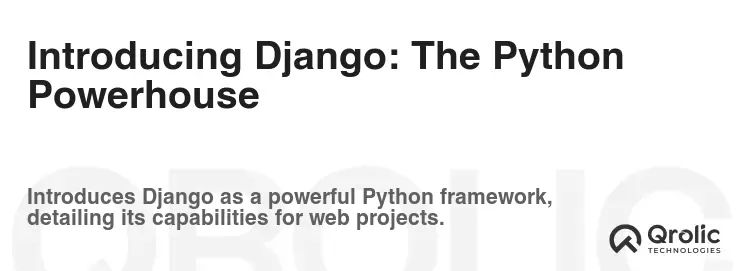
Django, a Python framework, is known for its “batteries-included” philosophy. It provides a comprehensive set of tools and features out of the box, allowing developers to build complex web applications quickly and efficiently. Django emphasizes rapid development and clean, pragmatic design.
Key Features of Django:
- ORM (Object-Relational Mapper): Django’s ORM allows you to interact with databases using Python code, providing a high-level abstraction over raw SQL queries.
- Template Engine: Django’s template engine provides a powerful and flexible way to generate dynamic HTML pages.
- Admin Interface: Django’s admin interface provides a user-friendly interface for managing your application’s data. It’s automatically generated based on your models, saving you time and effort.
- URL Dispatcher: Django’s URL dispatcher allows you to map URLs to views, providing a clear and organized way to handle incoming requests.
- Security: Django incorporates a number of security features, including protection against XSS, CSRF, and SQL injection.
- Middleware Support: Django’s middleware allows you to intercept and process requests and responses, enabling you to add custom functionality to your application.
- Testing Framework: Django provides a built-in testing framework, making it easy to write unit tests and integration tests.
- Form Handling: Django’s form handling capabilities simplify the process of creating and validating forms.
- Authentication and Authorization: Django provides built-in support for user authentication and authorization.
- Internationalization and Localization: Django provides support for internationalization and localization, making it easy to build applications that can be used in different languages and regions.
- REST Framework: Django REST framework is a powerful and flexible toolkit for building Web APIs.
When to Choose Django:
- Rapid Development: Django’s “batteries-included” approach and high-level abstractions make it ideal for rapid development.
- Data-Driven Applications: Django’s ORM and admin interface make it well-suited for building data-driven applications.
- Content Management Systems (CMS): Django’s features like the admin interface and template engine make it a good choice for building CMS platforms.
- Machine Learning Projects: Python’s extensive ecosystem of libraries for machine learning and data science makes Django a good choice for building web applications that incorporate machine learning models.
- Scalable Web Applications: Django is designed for scalability and can handle high traffic loads.
Django’s Advantages:
- Rapid Development: Django’s “batteries-included” approach allows developers to build applications quickly and efficiently.
- Security: Django incorporates a number of security features to protect against common web vulnerabilities.
- Scalability: Django is designed for scalability and can handle high traffic loads.
- Large Community: Django has a large and active community, providing ample resources, support, and packages.
- Excellent Documentation: Django’s documentation is well-written and comprehensive, making it easy to learn and use.
- Python’s Ecosystem: Leverages the vast Python ecosystem for scientific computing, data analysis, and machine learning.
Django’s Disadvantages:
- Steeper Learning Curve: Django’s comprehensive feature set can make it more challenging to learn than some other frameworks.
- Less Flexible: Django’s “batteries-included” approach can make it less flexible than some other frameworks.
- Performance Considerations: Can be slower than some other frameworks for certain types of applications if not optimized.
- ORM Overhead: The ORM can introduce performance overhead compared to raw SQL queries.
Laravel vs Django: A Detailed Comparison
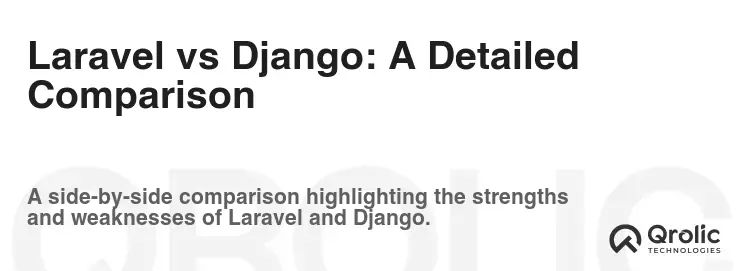
Now that we’ve introduced Laravel and Django, let’s compare them side-by-side across various aspects of web development.
1. Language and Syntax: PHP vs Python
- Laravel (PHP): PHP is a widely used scripting language known for its flexibility and large community. Laravel leverages PHP’s strengths and adds its own layer of elegance. Laravel syntax is often considered more readable and expressive than traditional PHP.
- Django (Python): Python is a versatile language celebrated for its readability and clean syntax. Django’s syntax mirrors Python’s simplicity, making it easy to learn and use.
Verdict: Python’s readability often wins points for beginners, but PHP’s widespread adoption means finding experienced developers can be easier in some regions.
2. Learning Curve: Ease of Entry
- Laravel: Laravel’s elegant syntax and comprehensive documentation make it relatively easy to learn, especially for developers with prior PHP experience.
- Django: Django’s “batteries-included” approach and comprehensive feature set can make it more challenging to learn, especially for beginners. However, Python’s general ease of use helps.
Verdict: Laravel might have a slightly gentler learning curve initially, especially for PHP developers. Django offers a quicker path to building complete applications once the fundamentals are grasped.
3. Performance: Speed and Efficiency
- Laravel: PHP’s performance has improved significantly in recent years. Laravel can be optimized for high performance with proper caching and database optimization techniques.
- Django: Django’s performance can be a concern for some applications, especially those with complex database queries. However, Django can be optimized with caching, database optimization, and asynchronous task processing.
Verdict: Both frameworks can achieve good performance with proper optimization. The choice often depends on the specific application requirements and development practices.
4. Scalability: Handling Growth
- Laravel: Laravel is designed for scalability and can handle high traffic loads. It supports various caching techniques and queue systems for handling asynchronous tasks.
- Django: Django is also designed for scalability and can be deployed on multiple servers to handle high traffic loads. It supports various caching techniques and asynchronous task processing.
Verdict: Both frameworks are capable of building scalable applications. The choice often depends on the specific application architecture and deployment environment.
5. Security: Protecting Your Application
- Laravel: Laravel incorporates security best practices to protect against common web vulnerabilities, including XSS, CSRF, and SQL injection.
- Django: Django incorporates a number of security features to protect against common web vulnerabilities, including XSS, CSRF, and SQL injection.
Verdict: Both frameworks offer robust security features. Django’s built-in security measures are often praised for their comprehensiveness. Regular security updates and adherence to best practices are crucial for both.
6. Database Support: Variety and Compatibility
- Laravel: Laravel supports a wide range of databases, including MySQL, PostgreSQL, SQLite, and SQL Server.
- Django: Django also supports a wide range of databases, including PostgreSQL, MySQL, SQLite, and Oracle.
Verdict: Both frameworks offer excellent database support. The choice often depends on your preferred database system and the specific requirements of your application.
7. Community Support: Finding Help
- Laravel: Laravel has a large and active community, providing ample resources, support, and packages.
- Django: Django also has a large and active community, providing ample resources, support, and packages.
Verdict: Both frameworks have strong communities. The specific resources and support available may vary depending on the type of problem you’re facing.
8. Templating: Creating Dynamic Views
- Laravel: Laravel’s Blade templating engine provides a powerful and lightweight way to create dynamic web pages with ease.
- Django: Django’s template engine provides a powerful and flexible way to generate dynamic HTML pages.
Verdict: Both templating engines are excellent. Blade is often praised for its elegant syntax and ease of use.
9. ORM: Database Interactions
- Laravel: Laravel’s Eloquent ORM provides a simple and elegant way to interact with databases.
- Django: Django’s ORM allows you to interact with databases using Python code, providing a high-level abstraction over raw SQL queries.
Verdict: Both ORMs are excellent. Eloquent is often praised for its ease of use and intuitive syntax.
10. Scaffolding and Code Generation: Speeding Up Development
- Laravel: Laravel’s Artisan console provides a set of helpful commands for performing common tasks such as creating migrations, running tests, and generating code.
- Django: Django’s admin interface provides a user-friendly interface for managing your application’s data and can automatically generate code based on your models.
Verdict: Both frameworks offer excellent scaffolding and code generation capabilities. The choice often depends on your preferred development style.
11. Third-Party Packages and Libraries: Extending Functionality
- Laravel: Laravel has a vast ecosystem of third-party packages and libraries available through Composer, the PHP package manager.
- Django: Django benefits from the extensive Python package ecosystem, offering a wide range of libraries for various tasks.
Verdict: Both frameworks benefit from thriving ecosystems. Python’s strength in data science and machine learning gives Django an edge in those areas.
12. Job Market: Career Opportunities
- Laravel: Laravel developers are in high demand, especially in regions where PHP is a dominant language.
- Django: Django developers are also in high demand, particularly in companies that rely on Python for web development and data science.
Verdict: Both frameworks offer excellent career opportunities. The specific job market may vary depending on your location and skill set.
Choosing the Right Framework: A Practical Approach
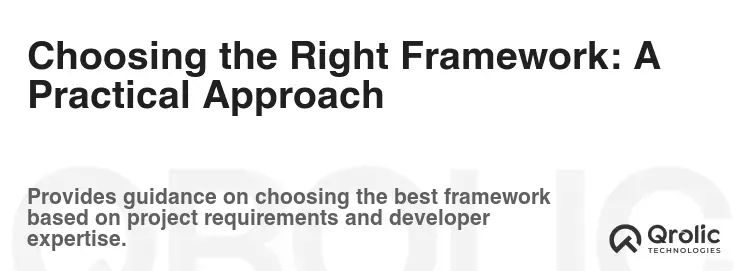
The “best” framework ultimately depends on the specific requirements of your project, your team’s skills, and your long-term goals. Here’s a practical approach to making the right choice:
-
Define Your Project Requirements: Clearly outline the features, functionality, and scalability requirements of your application.
-
Assess Your Team’s Skills: Consider your team’s existing skills and experience with PHP, Python, and other relevant technologies.
-
Evaluate the Framework’s Suitability: Evaluate how well each framework aligns with your project requirements and your team’s skills.
-
Consider Long-Term Goals: Think about the long-term maintainability, scalability, and security of your application.
-
Prototype and Experiment: Try building a small prototype with each framework to get a feel for the development process and identify any potential challenges.
-
Make an Informed Decision: Based on your evaluation and experimentation, make an informed decision about which framework is the best fit for your project.
Case Studies: Laravel and Django in Action

To illustrate the strengths of each framework, let’s look at some real-world examples:
-
Laravel:
- October CMS: A popular content management system built on Laravel.
- Asgard CMS: Another well-known CMS built with Laravel.
-
Django:
- Instagram: A photo and video sharing social networking service owned by Facebook.
- Pinterest: A visual discovery engine.
- Mozilla: The organization behind the Firefox web browser.
These examples demonstrate the versatility and power of both frameworks.
Qrolic Technologies: Your Partner in Web Development

At Qrolic Technologies (https://qrolic.com/), we have extensive experience in both Laravel and Django development. Our team of skilled developers can help you build high-quality, scalable, and secure web applications tailored to your specific needs.
We offer a wide range of services, including:
- Web Application Development: We can build custom web applications using Laravel or Django, depending on your project requirements.
- API Development: We can develop robust and scalable APIs using Laravel or Django REST framework.
- E-commerce Development: We can build e-commerce platforms using Laravel or Django, integrating with various payment gateways.
- CMS Development: We can develop custom CMS solutions using Laravel or Django, providing you with full control over your content.
- Maintenance and Support: We provide ongoing maintenance and support for your web applications, ensuring they remain secure and performant.
Whether you’re looking to build a small website or a complex enterprise application, Qrolic Technologies can help you achieve your goals. Contact us today to discuss your project.
Conclusion: A Matter of Perspective
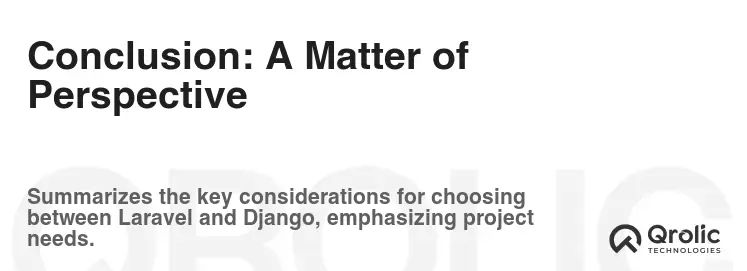
The Laravel vs Django debate is a classic one in the world of web development. There is no single “winner.” Both frameworks are powerful, versatile, and capable of building amazing web applications. The best framework for your project depends on your specific requirements, your team’s skills, and your long-term goals.
Consider your project’s needs carefully, experiment with both frameworks, and choose the one that feels like the best fit. With the right framework and a skilled development team, you can build a web application that exceeds your expectations. Ultimately, the choice is yours, and the power to create something amazing is in your hands. Embrace the challenge, explore the possibilities, and build something extraordinary.
